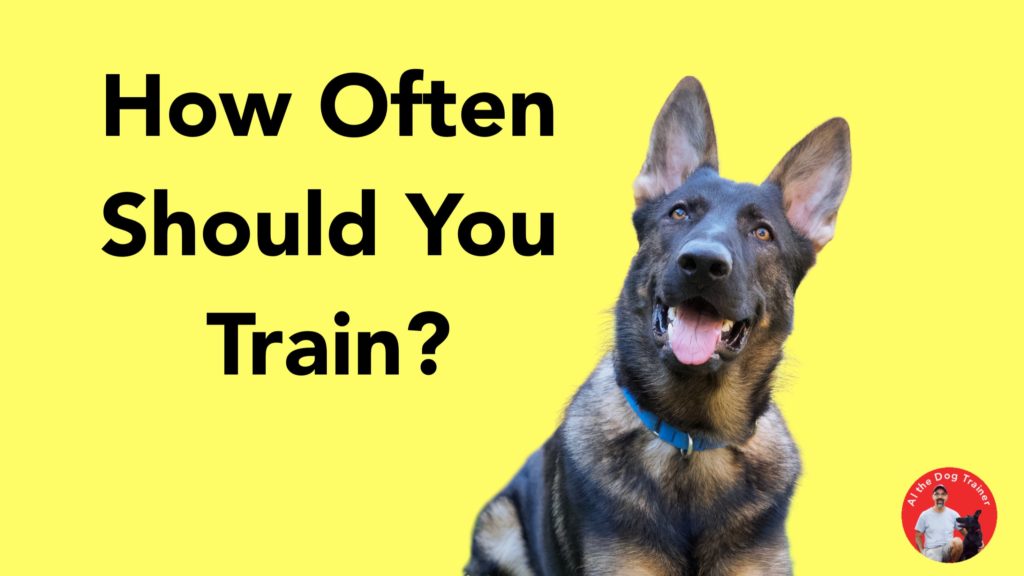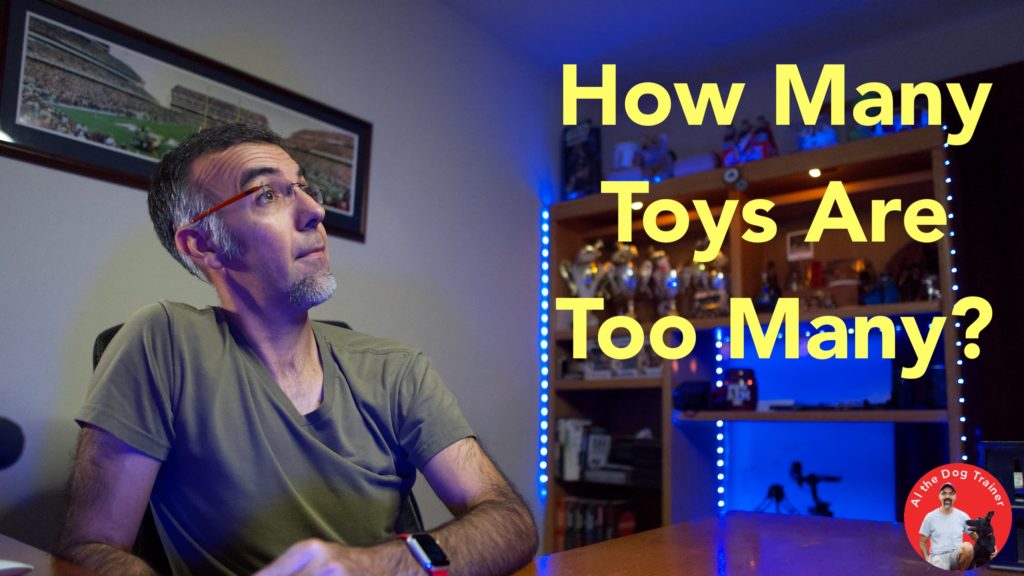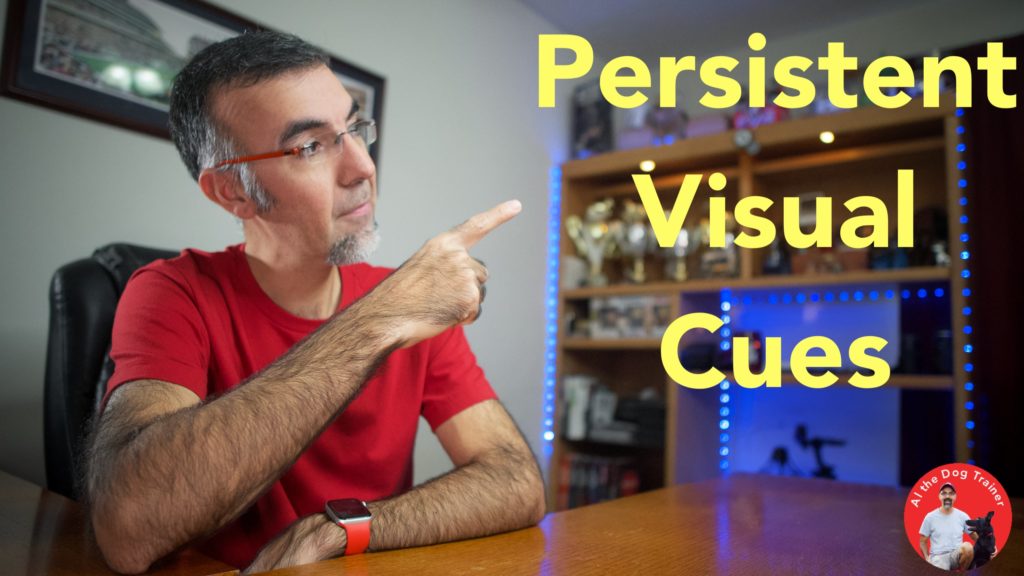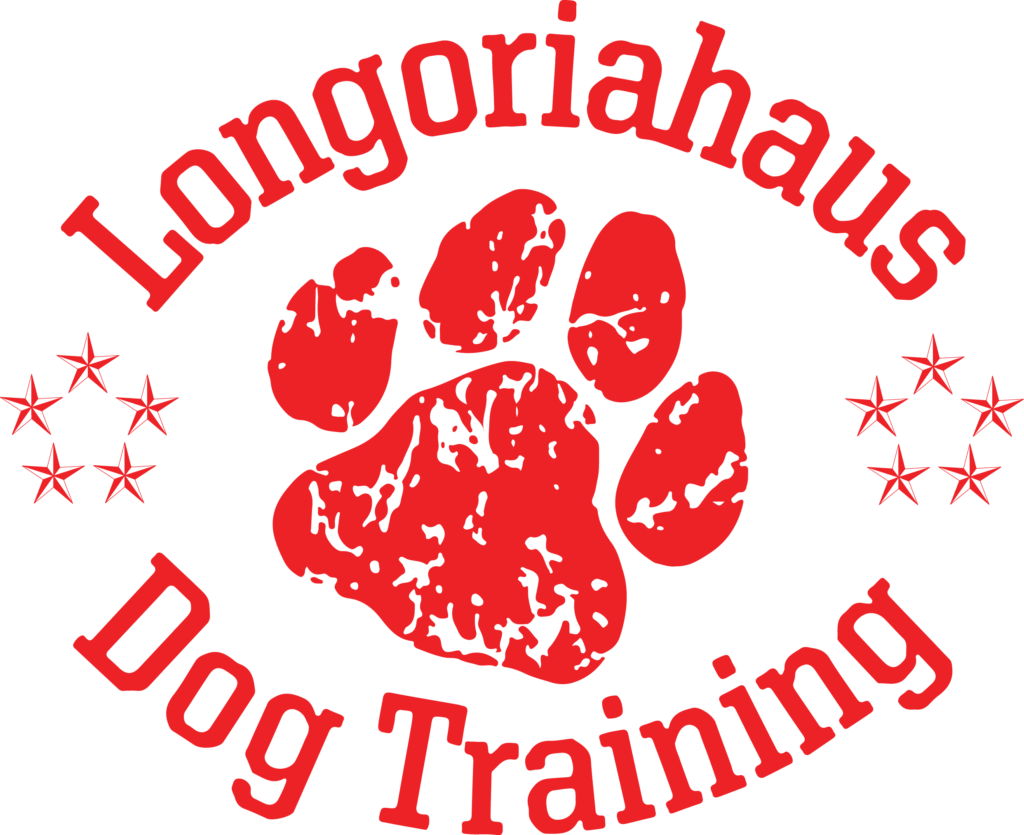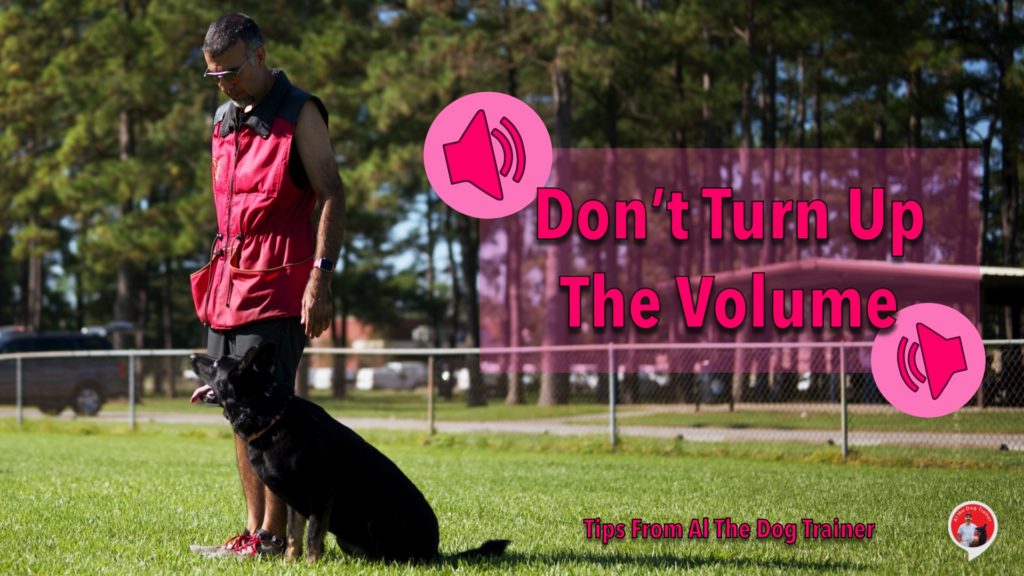
Today’s topic is “Don’t Turn Up the Volume.” I am training with a dog right now who has leash reactivity when they’re with their owner and they see other dogs. Now, this dog does do well with some dogs, but it is a little bit unpredictable. The dog overreacts and becomes nearly impossible to control. We decided to use the help of a remote collar. Sometimes with a remote collar, it can be useful for a dog to understand that if they enter into that behavior, it’s something that we don’t want them to do.
Reward The Corrected Behavior
One thing you should know about any kind of remote collar work or any dog training is that what you are fundamentally trying to do is trying to reward them for the correct behavior. The problem with reward is it doesn’t stop unwanted behaviors in the moment. The problem with using an aversive like a remote collar is it doesn’t actually build the habit that you want your dog to do. The rewards build habits and the aversives build boundaries.
These are generalizations and not necessarily always exactly true. So today’s title is Don’t Turn Up the Volume. Let me explain why that is and what’s going on with this specific dog. So we are trying to stop unwanted behavior. And like I said earlier if you’re trying to stop unwanted behavior, a punisher is something that is important to have. However, when you’re looking at multiple weeks of training and trying to get a dog better, the main thing that’s going to stop the dog from doing what you don’t want is the habit. The habit that the dog should be displaying instead of doing the things that you don’t want it to do.
The Punisher
So let me be a little bit more specific here. Let’s just say that you’re walking your dog and your dog tends to overreact to dogs. If you can’t find any way to stop the dog from overreacting, you need to get a punisher involved. Now, one of the variables there is how close are you to the actual distraction.
I would advise anybody to get as far from the distraction as they can, but while the dog can still perceive it. See what you want to get if you want the dog to overreact and get corrected. But more importantly, you want the dog to then not overreact. Be aware of the dog and then begin the process of reinforcement for avoiding doing the wrong thing. And then eventually within a few repetitions, showing the dog if they remember this thing, they should be doing that instead of giving all your attention to the distraction. Regardless of its leash reactivity or anything else.
Way Too Fast
So as you’re thinking about your training, what I don’t want you to do too rapidly is turn the volume up way too fast. Because sometimes if you turn your volume up too quickly, you can run into a problem. One that my client was very close to creating.
And that was every time that they saw a dog and their dog misbehaved, the dog would get corrected. And what’s going to happen is the dog is going to believe that every time it sees a dog, it equals correction. That is not what you’re supposed to be doing with any kind of aversive in your training. What you should be doing, as I said, is showing the dog that the behavior they’re doing is the thing that we don’t want.
It’s a Problem
It’s not actually the problem with the dog. It is a problem with the choice that you are making. That’s what you are trying to tell the dog. So the best way to fix this problem of not turning up the volume too high is going back to the fundamentals.
So this is the last thing that I’ll share on this. When I teach the fundamentals. When I teach a dog fundamentally how a remote collar works, here is what I do. I take a skill that the dog already knows, which is either getting into heel position or getting onto their place bed. So what I do is I press the button on the remote collar, which lets out the smallest amount of stimulation that I can tell the dog can feel.
And immediately after I press that button, I say to the dog the thing that I want them to do that I’ve taught them. When they do the thing that I want them to do, which is probably maybe 2 seconds away from them doing that. I release the button, and I reward the dog. So I press and hold the button at a low level. Give the command. When the dog does the behavior, I release any of the electronic pressure, and I reward the dog.
Leash Training
You could do the very same thing with leash training. It doesn’t have to be with the electronic collar. So if you can get the dog very good at that. If you can get the dog good at doing the thing that you say and then releasing the button and rewarding. Then when you go on your walk, you could press the button, tell your dog to heel, and you release the button in reward. And then as you begin to turn the volume up gradually, your dog will have an understanding of how to get itself out of trouble and back into doing the right thing.
Well, I hope that’s useful for any of you guys that are doing doing remote collar training. As always, I always recommend getting a professional involved to help you if you’re deciding to use that tool.
Remember to go visit my YouTube channel for helpful videos or find more tips like this right here on my website www.longoriahausdogtraining.com.
Happy Training!

